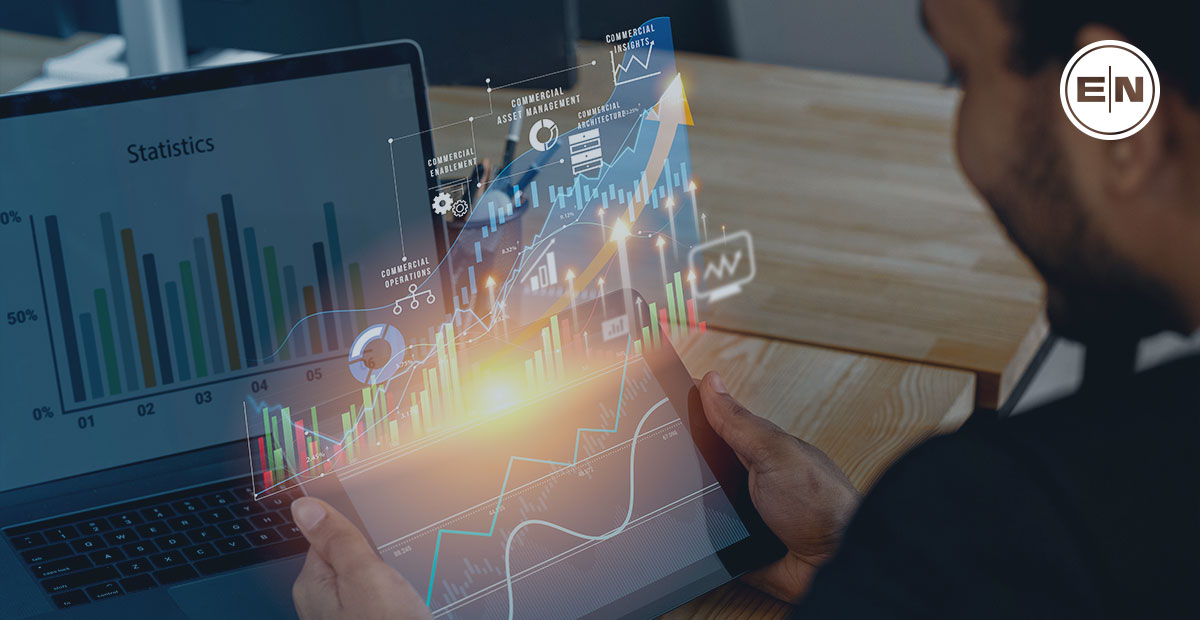Service Level Agreement (SLA) Monitoring and Reporting

An SLA monitoring and reporting is simply a contractual agreement between the service provider and its client where the quality of the service and the commitment fundamentally matters. An SLA Monitoring took place after the contractual agreement to meet the client’s expectations. The SLA Monitoring process is done by using several statistics like a systematic process of collecting the data, analyzing the data, monitoring the data, and other factors that derive a higher value to the business. Once done with monitoring, have to go with SLA reporting, where you can see the dashboard breakdowns with policy, time, and status where you can identify the problem areas. The SLA monitoring and reporting tools always help to meet the agreement for business applications and provide the utmost performance.
At ExterNetworks, we have SLA monitoring and service level reporting tools that help analyze the business applications, give valuable insights and provide impressive performance reports to meet the client requirements within a given time frame.
What is SLA Monitoring?
SLA stands for Service Level Agreement; it’s nothing but the service agreement between the service providers and the end users (clients) expecting the service from service providers in a given time frame. In this service agreement, it includes a legal agreement because they involve money and other formal and informal contracts between internal & external business units.
Different Sections in SLA Includes
- Whereby the service works
- Responsibilities of the Service
- Warranty of the Service
- Guarantee of the Service
- Ease and Performance of the Service
- Customer Support
Why We Need SLA Monitoring?
Three reasons you should have an SLA with their service provider.
Establishing clear and measurable guidelines: A Service Level Agreement (SLA) is vital to ensuring that the client and service provider are on the same page in terms of service and standards. The agreement reduces the obligations between the client and service provider by setting clear and measurable guidelines.
Unmet obligations are accountable: If the service provider fails to meet their obligations, they should pay for the reputation for the consequences that occurred. In your SLA, you should include consequences if service provider performance is not met standards. That’s why the service provider should always maintain goodwill with their client.
A Client gets tension free with SLA: The contract provides detailed information and provider accountability to the client. If any hurdles happen, that goes with the provider’s responsibility, so the client has peacefulness in the end.
Different Types Of SLA
They are three types of Service Level Agreements (SLA), depending upon the services requested by the client that will be provided to the customers (clients). The agreement is usually signed during the design stage itself.
- Service Level SLA: The service level SLA is also called service-based SLA, an agreement that is the same for all the customers who are using the services provided by the service provider. For e.g. if a telecom network provides services and it charges for annual maintenance costs. The charges are the same for all customers who are using the same telecom network
- Customer-Based SLA: The second type of SLA is customer-based SLA, an agreement that covers all the services used by this customer. E.g., an IT service provider provides different services like networking, maintenance, installations, monitoring, and more to the customers and businesses, and all are documented in one service level agreement, then it is called customer-based SLA.
- Multi-Level SLA: The Multi-level SLA is again divided into three levels, each defining a different set of customers for the same services and different services for the specific set of customers. Maintaining SLA’s part of service level management (SLM)
- Customer Level: It covers all the service level management (SLM) problems relevant to the particular customer groups, irrespective of their services.
- Service Level: It covers all the service level management (SLM) problems relevant to a specific set of services in relation to a specific customer group
- Corporate Level: It covers all the service level management (SLM) problems apt to every customer in an organization.
The Main Objectives Of SLA
- Documentation
- Agreement
- Monitoring
- Measurement
- Reporting
- Reviewing
- Ensure to maintain good relationship & communication with customer (client)
- Ensure that businesses should understand the level of the service committed
- Ensure that appropriate measurements are taken to provide quality service
Does SLA Include Response Time
Yes, SLAs include response time as well. It can be defined as “the amount of time from when a request is made until the service is delivered.” Response time is measured in seconds, minutes, hours, days, weeks, months, and years.
What Are SLA Metrics?
Response Time – How long does it take to respond?
Availability – Is there any downtime?
Performance – What is the speed of data transfer?
Reliability – Can we get our work done without any interruption?
Integrity – Does the system do what it says?
Security – Are the security measures in place?
How to Measure SLA?
There are two ways to measure SLA they are;
- Real-Time Monitoring
- Historical Analysis
Real-Time Monitoring
Real-time monitoring involves measuring performance at the moment of occurrence of an event. There are various tools available to monitor real-time performance, such as Network Management System (NMS), Network Performance Monitor (NPM), NetFlow Analyzer, etc.
Historical Analysis
It is the process of analyzing historical data to determine whether or not the SLA has been met. This method requires collecting information over a period of time. Historical analysis includes the following steps:
- Collecting Data
- Analyzing Data
- Presenting Results
Collecting Data
Data collection is the first step in the process of historical analysis. Collecting data is the most important aspect of this process because if you don’t collect the right kind of data, you won’t have enough information to analyze. You need to know how much data was collected, where it came from, and who generated it.
Analyzing Data
Data analysis is the next step in the process of historic analysis. Once you’ve collected your data, you’ll want to analyze it so you can see trends and patterns. For example, you may want to look at the number of requests per day, the average response time, and the percentage of failed transactions.
Presenting Results
Presenting results is the final step in the process of analyzing historical performance. After you’ve analyzed your data, you’ll present your findings to stakeholders. If you’re presenting your findings to a manager, he or she will probably want to see graphs and charts showing the trend of the data.
What is The Difference Between KPI and SLA?
Key Performance Indicators(KPIs) are measurable indicators that help you to track progress toward business goals. KPIs are usually numeric values, but not always. They are generally expressed in numbers, percentages, ratios, counts, averages, and other statistical measures. KPIs are often used to compare current performance against past performance.
On the other hand, SLA is a contract between the client and the service provider. This contract defines the levels of services provided by the service provider. SLAs are typically expressed in terms of percentage of availability, response time, throughput, reliability, and so on. These contracts define the minimum acceptable level of service.
What are Response Time and Resolution Time as Part Of SLA?
Response time is the time taken to process a request. Resolution time is the time the service provider takes to resolve the issue. If the resolution exceeds the response time, it is considered a delay.
What is SLA in Service Desk?
At the Service desk, SLA is also known as SLO. SLO stands for Service Level Objective. The purpose of SLO is to ensure that the service levels specified in the SLA are met. In case of failure to meet the SLO, the service provider has to compensate the client for the loss caused.
Service Level Agreement (SLA) in ITIL
ITIL is a framework that helps organizations improve their IT services through better planning, design, delivery, and support. ITIL is an acronym for Information Technology Infrastructure Library. ITIL is based on ISO/IEC 20000 series standard.
Using different SLA monitoring tools and software, we can find out where the problem arises and resolve them, thereby completing the task within a given period. The SLA monitoring software used at ExterNetworks is very flexible in solving the issues and meets the client guidelines within a given time frame. For ExterNetworks, SLA Monitoring is the main criteria through which we gain clients’ goodwill.
Service Level Agreement Metrics
Service Level Agreement (SLA) metrics are used to measure how well a company delivers on promises made during contract negotiations. The SLA metric measures the percentage of requests for which a company has delivered within agreed upon timescales. An example would be “99.9% of all requests were processed within 24 hours”. This means that 99.9% of requests were fulfilled within 24 hours.
Which Tool is Used for Reporting of SLAs and Internal Metrics
The tool we use is called “SolarWinds”. SolarWinds SLA Reporting Tool is a cloud based solution that allows users to monitor and analyze performance across multiple servers. The application provides a comprehensive set of tools for monitoring server resources such as CPU, memory, disk space, network bandwidth, and much more.
What is a Service Level Agreement Monitoring Chart?
A Service Level Agreement Monitoring Chart is used to monitor the performance of a service provider against agreed service levels. The SLA monitoring chart shows how often the service has failed to meet the agreed service level. This information helps the customer decide whether they should continue using the service.
Conclusion
In conclusion, SLA monitoring is important because it ensures that the service provider provides the required service level. It also helps us to identify any delays in the service provisioning process. A good SLA should include all the relevant details about what happens when something goes wrong with your services. An effective SLA should also include a clear description of the steps that need to be followed by the customer to escalate the problem.





